THE BASQUE COUNTRY
The decades between 1970 and 2000 in Vitoria-Gasteiz are hidden stages in which great events or situations changed the way we live today. Many of these news are probably well known, but many others have been hidden by the media due to the fear of the reaction they might cause in the audience.
1975-1985
One of the most transcendent historical events was the misfortune that occurred on 3rd March 1976 in Vitoria Gasteiz. The Spanish Armed Police Corps used tear gas to force the workers on strike out of the Church of San Francisco de Asís in the Basque capital of Vitoria. As the workers left the church, they were shot by the police, resulting in 5 dead and 150 injured with gunshot wounds. It was such a massacre! This happened in the neighbourhood where our school is.
Something similar took place in the same year 9th May in Montejurra. Members of the Traditionalist Communion with the help of the fascist bunker planned an attack against the Carlist party there.
These two tragic events were strongly related to politics, however, this topic didn’t only bring negatives. For example, 5th December 1976, was the date when the first appearance of the Basque flag, which is called “Ikurrina”, happened. During the football match between the Athletic Club and the Real Sociedad in Anoeta, captains of both teams entered the field with what is the actual flag of the Basque Country, in front of 25,000 viewers, at a time when the flag was banned.
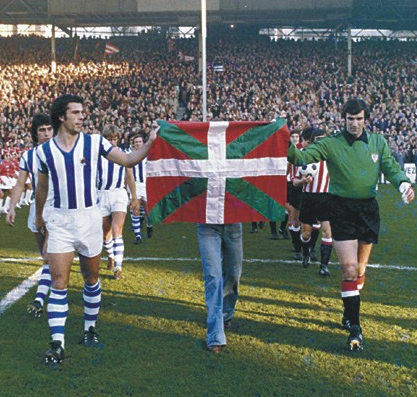
In 1975, Baskonia (then Vasconia Schweppes) won for the first time in history over Barcelona. Recently, a tribute has been paid to those in the group. The first match of the Basque National Basketball Team, organized by Sustraiak, was played on April 26, 1980 in Mendizorroza. Matches were also played between Catalonia and the Basque Country in 1980. Finally, on 26th May 1985, Baskonia won its first official title.
The ticket for the Super Cup in 1980, which was played by Athletic and Real Sociedad, cost around 5€, and nowadays, it costs around 40€. Also, the salary of football players has changed more than the prices of the tickets. If we compare Iñaki Williams’ salary, who plays for Athletic Club, with the salary of another player in 1975, we can see that the difference in the football players’ salary is huge.
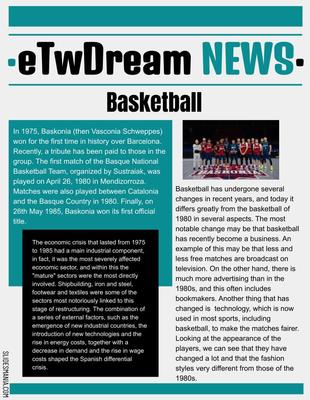
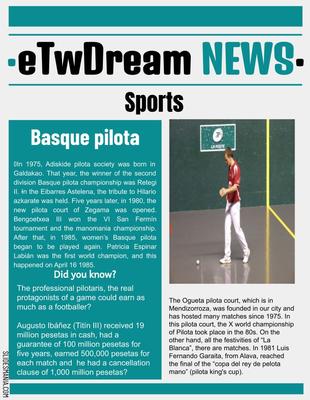
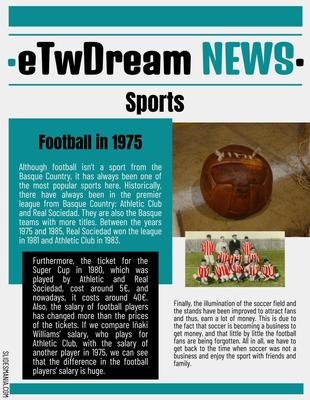
Argia.eus, CC BY-SA 4.0
Many other events took place at that time. In 1983, there were floods in Bilbao that had a devastating effect, with 600 litres per square metre of rainfall. La Rivera market was reduced to rubble overnight. In 1985, it snowed so much by the seaside that La Concha beach became a ski station.
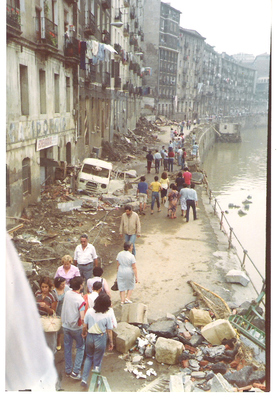
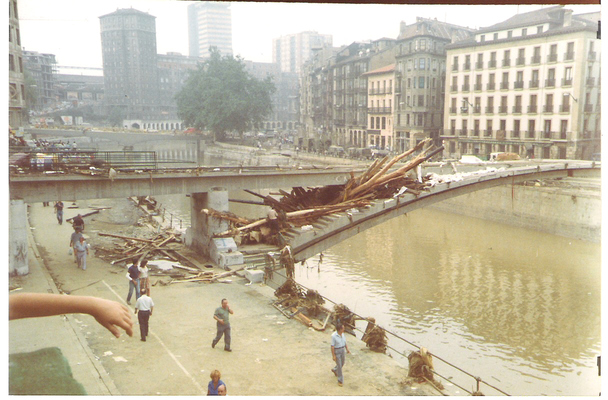
Bilboko Liburutegi Digitala
In 1984, the PSOE government decreed the nuclear moratorium, which led to the stoppage of work on Lemoiz I and Lemoiz II, which were part of the nuclear central of Lemoiz. In the Basque Country, even if we are not conscious about it, there have been and there are many problems related to the environment. People didn’t use to be aware about the damage that industries and nuclear power plants can cause, but now we see people more involved in demonstrating and fighting for the good and safety of all of us.
 "Nuclear power plants will bring jobs"
"Nuclear power plants will bring jobs"
António Passaporte. Archivo Loty, IPCE, Ministerio de Cultura y Deporte licencia Creative Commons BY-NC-ND. 
The Garoña nuclear power plant, which had several failures in a row in one month, is an example of a social fight. Social and trade union organisations were calling for demonstrations, under the slogan "Garoña, itxi orain. Fukushima gehiagorik ez" (Close Garoña now. No more Fukushima). Garoña was also an old, unsafe and dangerous power plant, whose production had been replaced by renewable energies. Therefore, it was time to decree its closing without further delay. Instead of learning the lessons of Fukushima, a serious nuclear accident in Japan, here they insisted on prolonging the life of nuclear power plants beyond rationality and common sense. Something similar happened with the water of the rivers or lakes that were in the villages, these used to be polluted by chemicals that came from different industries, but people did not care and were not aware of the damage that this could cause on them. However, all this has changed now since people are more involved in these issues, and have started to act. Cleaning the rivers, stopping the factories and demonstrating against the big nuclear power plants!
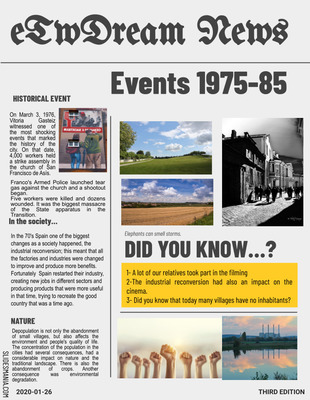
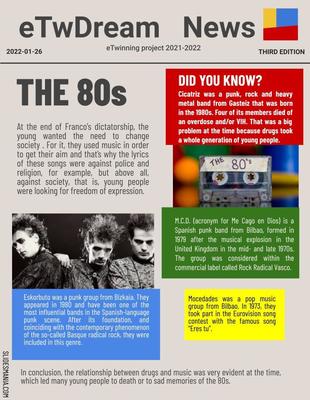
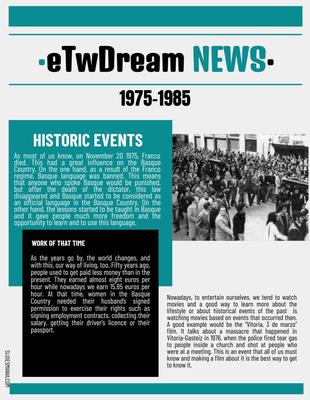
The big censoring that cinema and music suffered during the dictatorship ended up after Franco’s death. In the case of the cinema, “Estado de excepción” and “Proceso de Burgos” were the most popular films in Spanish. On the other hand, “Hamaseigarren aidanez” and “Kalabaza tripontzia” in Basque. The Donostia film festival started in 1953 and its influence is present nowadays too. During the period between 1975 and 1985 around 213 films were presented. Moreover, in music, there was such a huge change due to technology that new music styles flourished. Some of the artists that have been more listened to in the Basque Country between 1975 and 1985 were these ones: Mikel Laboa, Hertzainak, La Polla Records, Eskorbuto… The death of Franco led to mean an enormous swap in the Basque Country and in its artistic culture, more specifically in music and cinema.
As we can see the cinema has changed a lot over the years. We searched for information about the cinema in 1975, when our grandparents were teenagers. We talked to them and they told us a lot of interesting things. The first interesting thing is that in their free time, they went to the church to watch movies because it was the best activity to do when they were young. Our grandparents were born before the death of Franco, which means that there were a lot of prohibitions. For example, Basque language couldn't be spoken. As a result, there weren't any films in our language.
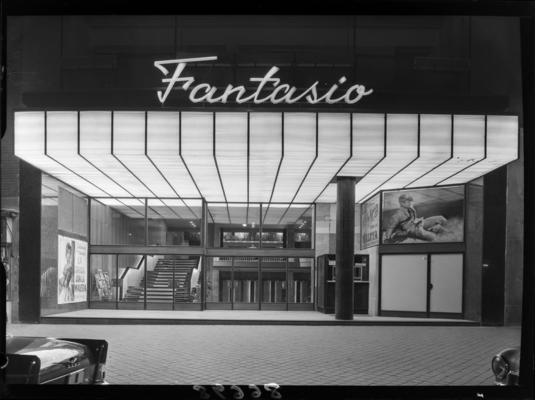
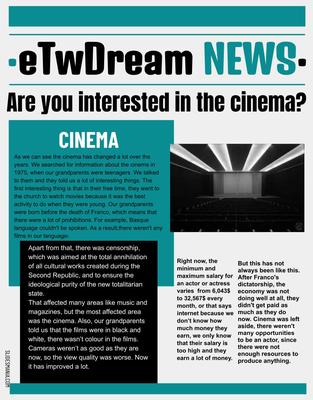
António Passaporte. Archivo Loty, IPCE, Ministerio de Cultura y Deporte licencia Creative Commons BY-NC-ND. 
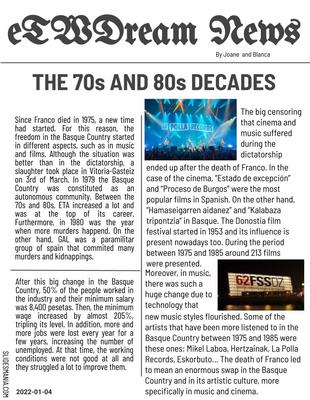
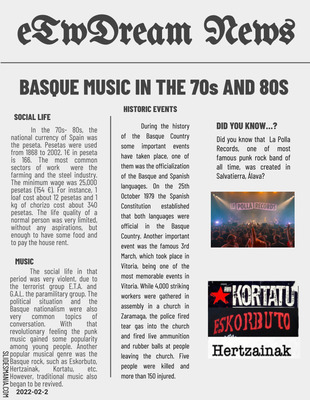
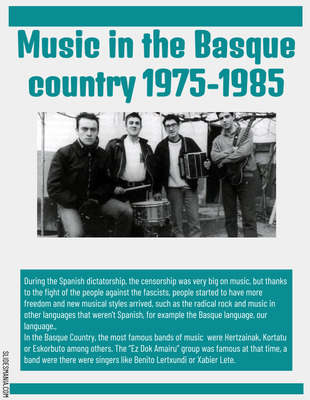
Between 1975 and 1985, people could know the musical taste of each person and their political ideal only by seeing what they were wearing. Society was widely divided into social classes, and they were distinguished by the clothes they wore. After Franco's death, there was much more freedom for everything.
The Basque Radical Rock appeared in the 80s. Different styles were introduced, such as punk, rock, ska and reggae. In addition, fashion influenced the music of the time. People started wearing leather, lots of spikes and spiked and colourful hair.
Did you know...?
.. that Both Paco Rabanne and Balenciaga fashion designers were born in the Basque Country?
Paco Rabanne’s mother worked for Balenciaga. They all had moved to Paris due to the Spanish Civil War and worked in Paris afterwars.
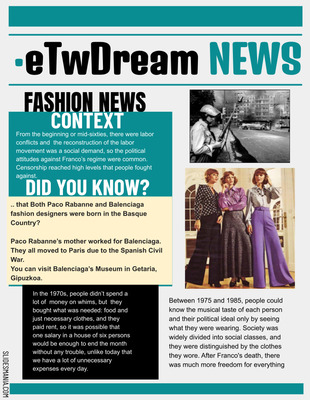
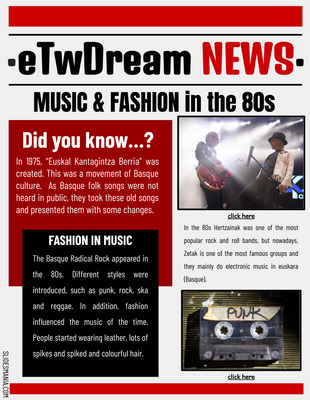
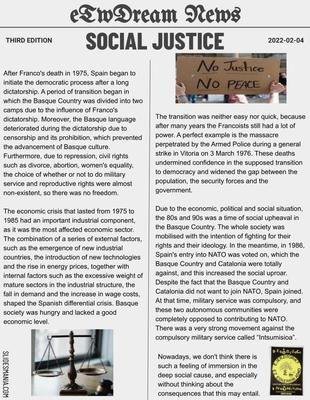
The economic crisis that lasted from 1975 to 1985 had an important industrial component, as it was the most affected economic sector. The combination of a series of external factors, such as the emergence of new industrial countries, the introduction of new technologies and the rise in energy prices, together with internal factors such as the excessive weight of mature sectors in the industrial structure, the fall in demand and the increase in wage costs, shaped the Spanish differential crisis. Basque society lacked a good economic level.
During the 1970s and 1980s, having a job gave social status and was seen as the means to enter into the dynamics of life necessary to participate in society. Work became the first step to marriage and family, and was not mixed with personal life. Unlike today, people used to work because of the high sense of discipline and honour, daily sacrifices that ensured the support of the family. In the 1970s, working life was governed by very clear rules, where the working space was limited to the office, responsibilities were individual and specific. Besides, there was a set time when the working day began and the exact time when it ended, almost like today. Nevertheless, one thing that has changed a lot is the minimum monthly wage.
After this big change in the Basque Country, 50% of the people worked in the industry and their minimum salary was about 8,400 pesetas, 50€. Then, the minimum wage increased by almost 205%, tripling its level. In 1985 it was around 223€ and today it is 950€ (to be 1,000) per month. In addition, more and more jobs were lost every year for a few years, increasing the number of unemployed. At that time, the working conditions were not good at all and they struggled a lot to improve them.
In the 70s-80s, the national currency of Spain was the peseta and it was used from 1868 to 2002. 1€ in peseta is 166. For instance, 1 loaf cost about 12 pesetas and 1 kg of chorizo cost about 340 pesetas. The life quality of a normal person was very limited, without any aspirations, but enough to have some food and to pay the house rent.
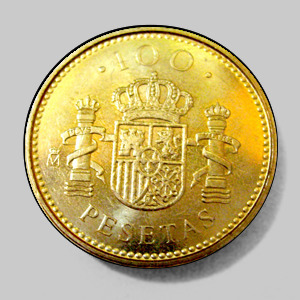 Public Domain
Public Domain 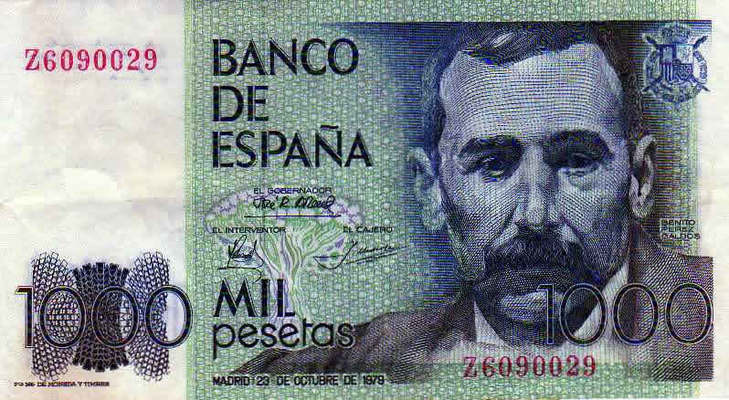 Jean Michel Etchecolonea, CC BY-SA 3.0, via Wikimedia Commons
Jean Michel Etchecolonea, CC BY-SA 3.0, via Wikimedia Commons
Due to the economic, political and social situation, the 80s and 90s was a time of social upheaval in the Basque Country. The whole society was mobilised with the intention of fighting for their rights and their ideology. In the meantime, in 1986, Spain's entry into NATO was voted on, which the Basque Country and Catalonia were totally against, and this increased the social uproar.
Despite the fact that the Basque Country and Catalonia voting against joining NATO, Spain joined. At that time, military service was compulsory, and these two autonomous communities were completely opposed to contributing to NATO. There was a very strong movement against the military service, which called “Insumisioa”.
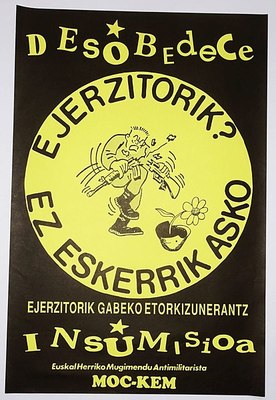
Attribution: General Direction of Peace, Coexistence and Human Rights of the Government of Navarre , CC BY-SA 4.0,
The first mobile phones in Spain were implemented in 1976 with the name of automatic telephone. This phone was mostly used in vehicles. With this detail, we can see how traffic laws have evolved, but that is another topic. In short, these phones were not still quite mobile. Mobile phones began to be marketed in Spain at the end of the 1980s. And since 2006, there have been more telephone lines than people in Spain. As a result, you can see the speed at which communication has grown.
In relation to technology, the very popular battery-business Cegasa, granted an expedition to the Everest to Martin Zabaleta. On the other hand, the cooperative model of business started in the Basque Country, which stated that the participation of each partner in the benefit is determined by the work incorporated to the common objective and not by the amount of money that has been contributed. This system attracted new workers and later it got spread around the world.
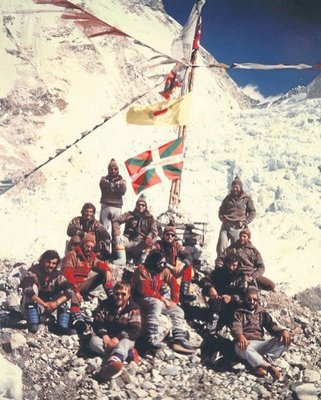 By Felipe Uriarte CC BY-SA 4.0
By Felipe Uriarte CC BY-SA 4.0 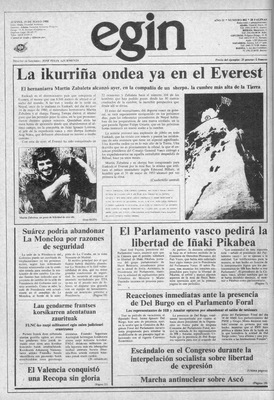
When the dictatorship that had Spain under oppression ended in 1975, Basque literature started to rise. The fear that the silenced authors faced in the previous decades was no longer a problem. They started writing with much more freedom and they haven’t stopped since.
After 1975 more Basque author names started being recognized in the Basque Country. The most important one was Bernardo Atxaga (and still is). His work has marked a milestone in Basque literature and culture, but out of all his books, "Obabakoak" is the one that captures the best of his extraordinary writing skills. This multi-awarded book is considered the culmination of Basque literature. As his whole work has been published in Basque, some experts may add that he has helped preserve the language. Alongside with him, many other authors have been essential for the development of our culture; for example: Ángel Lertxundi (writer) or Xabier Lete (poet) or the Pott band, which includes Bernardo Atxaga, Joseba Sarrionandia, Manu Ertzilla, José mari Iturralde, Ruper Ordorika, and Jon Juaristi. We are the grand-children of the ones who suffered the dictatorship and we are proud to say that we recovered our identity thanks to the sacrify of these authors.
How to make a GIF